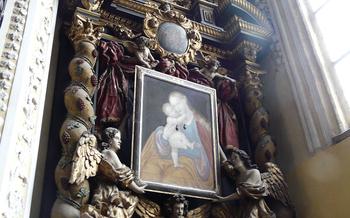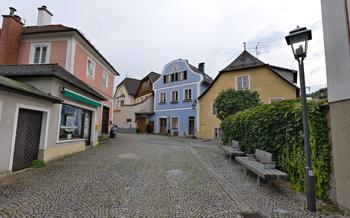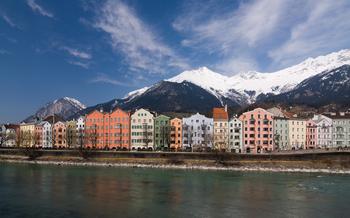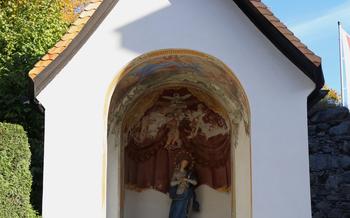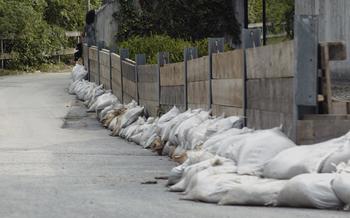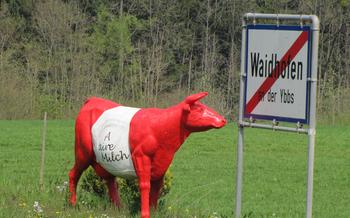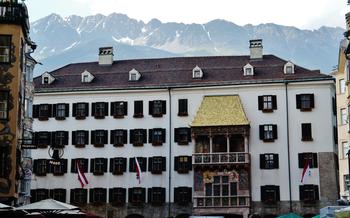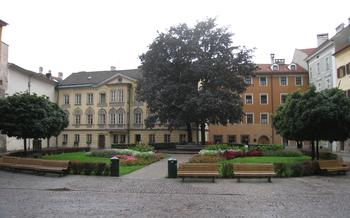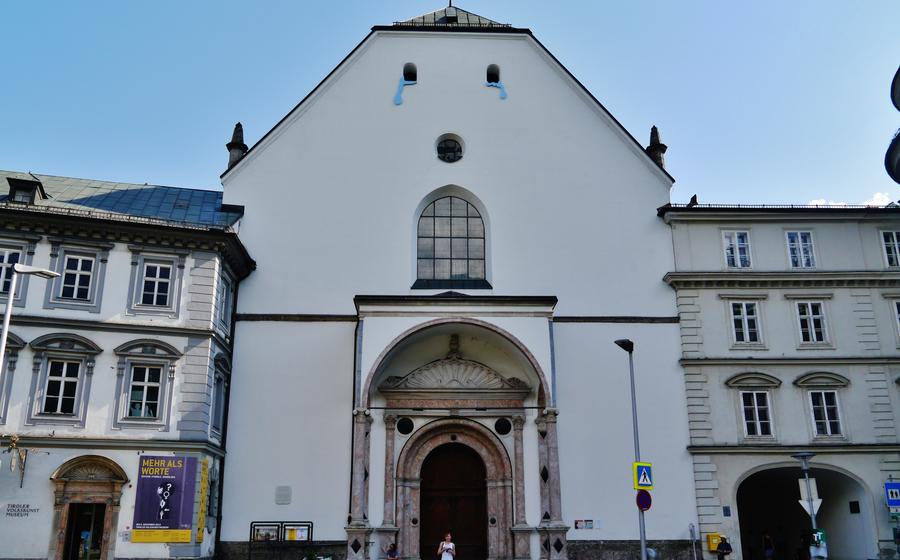
Hofkirche (Court Church)
- Hofkirche: A Symbol of Imperial Power
- Exploring the Church's Interior
- The Imperial Tomb: A Work of Art
- Hofkirche Museum: Unveiling Hidden Treasures
- Imperial Silver Chapel: A Showcase of Opulence
- Hofburg Chapel: A Sacred Space
- Hofburg Palace: A Majestic Residence
- Hofkirche Concerts: A Musical Experience
- Exploring the Old Town of Innsbruck
- Nordkette Mountains: A Breathtaking Panorama
- Golden Roof: A Symbol of Imperial Splendor
- Ambras Castle: A Renaissance Masterpiece
- Tyrolean Folk Art Museum: A Celebration of Local Culture
- Innsbruck Card: A Key to the City
- Insider Tip: Hidden Gems of Innsbruck
Hofkirche: A Symbol of Imperial Power
As you step into Innsbruck's majestic Hofkirche, or Court Church, you're transported back in time to the grandeur of the Habsburg dynasty. This stunning edifice, a testament to imperial power and prestige, serves as the final resting place of Emperor Maximilian I, the Holy Roman Emperor who ruled from 1493 to 151
The Hofkirche stands as a unique blend of Gothic and Renaissance architectural styles, showcasing the transition between two significant eras in European art and history. Its intricate design and opulent ornamentation reflect the Habsburgs' desire to demonstrate their wealth, power, and devotion to the Catholic faith.
Marvel at the church's intricate details, from the soaring ribbed vaults to the delicate tracery of the windows. Admire the bronze statues known as the "Black Men," which flank the nave and symbolize the emperor's imperial guard. Each statue is a masterpiece of craftsmanship, representing virtues and ancestors associated with the Habsburg lineage.
Discover the cenotaph of Emperor Maximilian I, a masterpiece of Renaissance sculpture that dominates the chancel. This elaborate tomb, adorned with 28 life-size bronze statues, depicts the emperor surrounded by his family and allegorical figures. The intricate details and symbolism of the tomb reflect Maximilian's desire to immortalize his legacy and showcase his power and authority.
Exploring the Church's Interior
The Hofkirche's interior is a treasure trove of stunning artwork and intricate details that captivate visitors from the moment they step inside. Marvel at the radiant stained glass windows, which depict scenes from the life of Mary with exquisite craftsmanship and vibrant colors. Each window tells a story, inviting you to delve into the rich biblical narratives they portray.
Admire the impressive collection of bronze statues known as the "Black Men," which stand guard around the church's interior. These life-size figures, created by talented Renaissance artists, represent different virtues and ancestors, adding a touch of solemnity and grandeur to the church's atmosphere.
Discover the cenotaph of Emperor Maximilian I, a masterpiece of Renaissance sculpture that dominates the church's center. Intricately carved from white marble and adorned with bronze reliefs, the cenotaph portrays the emperor in all his glory, surrounded by a host of saints and allegorical figures. It is a testament to Maximilian's power and legacy, inviting you to contemplate his life and reign.
Finally, take the time to explore the side chapels dedicated to various saints. Each chapel features beautiful artwork and intricate details, showcasing the artistic talents of the era. Discover the stories behind these chapels and the saints they honor, gaining a deeper understanding of the religious and cultural context of the Hofkirche.
The Imperial Tomb: A Work of Art
The Imperial Tomb is the centerpiece of the Hofkirche, a magnificent work of art that is both awe-inspiring and thought-provoking. Created by a consortium of artists led by Gilg Sesselschreiber, the tomb is adorned with 28 life-size bronze statues, each representing a different virtue or ancestor of Emperor Maximilian I.
Crafted with exquisite detail, the statues stand guard around the emperor's cenotaph, a masterpiece of Renaissance sculpture by Jörg Kölderer. Each statue is a unique portrayal of a historical figure or an allegorical representation, symbolizing the emperor's power, lineage, and legacy.
Among the most notable statues are those of King Arthur and Theodoric the Great, representing strength and justice. The statue of Andreas Hofer, a Tyrolean patriot who fought against Napoleon, is a reminder of the region's rich history.
The tomb is a testament to the Habsburg dynasty's power and prestige, and it serves as a lasting tribute to Emperor Maximilian I. Its intricate details and symbolism invite visitors to contemplate the emperor's life, his accomplishments, and his enduring legacy.
Hofkirche Museum: Unveiling Hidden Treasures
The Hofkirche Museum is a fascinating journey through the history and art of the Hofkirche. Interactive exhibits and displays bring to life the stories of the artists and craftsmen who contributed to the church's creation. Visitors can learn about the cultural and historical context of the Hofkirche's construction and uncover hidden stories and secrets behind its art and architecture.
The museum showcases a collection of artifacts, including models, drawings, and tools used in the construction of the church. Visitors can also see the original plans for the church and learn about the challenges faced by the architects and builders. The museum also features a section dedicated to the life and work of Emperor Maximilian I, who commissioned the construction of the Hofkirche.
A visit to the Hofkirche Museum is a must for anyone interested in the history of the Hofkirche and the Habsburg dynasty. The museum offers a unique opportunity to learn about the cultural and artistic significance of this iconic landmark.
Imperial Silver Chapel: A Showcase of Opulence
Nestled within the Hofburg Palace complex, the Imperial Silver Chapel is a testament to the Habsburg dynasty's wealth and devotion. This sacred space, reserved for the exclusive use of the imperial family, houses an exquisite collection of silver artifacts and liturgical objects that shimmer with opulence and craftsmanship.
The centerpiece of the chapel is the silver altar, a masterpiece of Baroque art that gleams with intricate carvings and delicate ornamentation. Surrounding the altar are silver candlesticks, chalices, and other vessels, each adorned with intricate designs and precious stones. These objects, crafted by renowned silversmiths, showcase the Habsburgs' patronage of the arts and their commitment to religious splendor.
The Silver Chapel is more than just a place of worship; it is a symbol of power and prestige. The silver objects on display were not merely decorative; they were also a tangible representation of the Habsburgs' wealth and influence. The chapel served as a stage for important religious ceremonies, where the Habsburg monarchs would demonstrate their piety and their connection to the divine.
Exploring the Imperial Silver Chapel is a journey through the Habsburgs' religious devotion and their unwavering commitment to opulence. Each silver object tells a story of power, prestige, and the Habsburgs' deep-rooted faith.
Hofburg Chapel: A Sacred Space
The Hofburg Chapel is a sacred space within the Hofburg Palace, reserved for the private worship of the imperial family. Its serene atmosphere invites visitors to reflect and connect with the spiritual essence of the Habsburgs. Adorned with beautiful frescoes and intricate stucco work, the chapel exudes an aura of tranquility and devotion. Step inside to experience the history and significance of this sacred place, where the imperial family sought solace and communion with the divine. Learn about the ceremonies and rituals that took place within the chapel, and discover the stories of the Habsburg monarchs who found comfort and guidance within its walls. The Hofburg Chapel stands as a testament to the deep religious devotion of the imperial family and offers visitors a glimpse into their personal spiritual lives.
Hofburg Palace: A Majestic Residence
The Hofburg Palace is a grand and majestic palace located in the heart of Innsbruck, serving as the former residence of the Habsburg emperors. With its rich history and stunning architecture, the palace offers a fascinating glimpse into the grandeur and power of the Habsburg dynasty.
Explore the palace's grand halls and opulent state rooms, each adorned with exquisite furnishings, tapestries, and works of art. Learn about the political and administrative significance of the palace, which served as the center of the Habsburg Empire for centuries.
Take a stroll through the beautiful gardens and courtyards surrounding the palace, offering a tranquil oasis amidst the bustling city. Discover the stories of the emperors and empresses who once called the Hofburg Palace home, and immerse yourself in the rich history of this magnificent residence.
Hofkirche Concerts: A Musical Experience
The Hofkirche is not only a magnificent architectural wonder but also a renowned venue for musical performances. Throughout the year, the church hosts a diverse range of concerts, from classical to contemporary, offering visitors a unique and unforgettable experience. The acoustics of the Hofkirche are simply breathtaking, creating a rich and resonant sound that enhances the musical performances.
Attending a concert in the Hofkirche is a truly magical experience. As the music fills the air, the church's stunning interior comes alive, creating an atmosphere that is both intimate and awe-inspiring. The combination of beautiful music, stunning visuals, and historical significance makes for an unforgettable evening.
For music lovers, the Hofkirche concerts are a must-attend event. The diverse range of performances ensures that there is something for everyone, from classical enthusiasts to contemporary music fans. Whether you prefer the soaring melodies of a symphony or the rhythmic beats of a jazz ensemble, you are sure to find a concert that will captivate your senses.
In addition to the regular concerts, the Hofkirche also hosts special events and festivals throughout the year. These events often feature world-renowned musicians and ensembles, offering visitors a chance to experience the very best in classical and contemporary music.
So, if you are looking for a unique and unforgettable musical experience, be sure to attend a concert at the Hofkirche. Immerse yourself in the beautiful music, stunning visuals, and historical significance of this iconic church. The Hofkirche concerts are a true feast for the senses and a highlight of any visit to Innsbruck.
Exploring the Old Town of Innsbruck
Innsbruck's Old Town is a captivating blend of history, culture, and charm, inviting visitors to embark on a journey through time. Stroll along the cobblestone streets, where colorful buildings with intricate facades line your path, each telling a story of the city's rich past. Discover hidden courtyards and charming passageways that reveal secret corners and architectural gems.
Immerse yourself in the vibrant atmosphere as you explore the Old Town's bustling streets, lined with inviting cafes, unique shops, and traditional restaurants. The air is filled with the aroma of freshly brewed coffee, tempting pastries, and the sounds of laughter and conversation. Take your time to savor the local delicacies, indulge in some retail therapy, or simply relax and soak up the unique ambiance of this historic neighborhood.
The Old Town is a treasure trove of cultural experiences, with street performers showcasing their talents, lively markets offering local produce and handicrafts, and festivals celebrating the city's heritage. Whether you're a history buff, an art enthusiast, or simply seeking a delightful stroll, Innsbruck's Old Town promises an unforgettable journey into the heart of this captivating city.
Nordkette Mountains: A Breathtaking Panorama
Ascend to the majestic Nordkette Mountains via the Nordkette Cable Car, a marvel of engineering that whisks you to breathtaking heights. From the comfort of your cable car, witness the awe-inspiring panorama of Innsbruck and the surrounding Alps, a tapestry of verdant valleys, snow-capped peaks, and charming villages.
Disembark at the top and embark on a journey of exploration, traversing scenic trails that meander through the mountains, each step revealing a new vista. Whether you prefer the tranquility of a leisurely hike or the adrenaline rush of mountain biking, the Nordkette Mountains offer an unforgettable experience for nature enthusiasts of all levels.
Along your journey, discover mountain huts and restaurants that beckon with the promise of traditional Tyrolean cuisine and panoramic views. Savor delectable regional dishes while basking in the sun-kissed splendor of the Alps, a feast for both the palate and the soul.
Immerse yourself in the rich biodiversity of the Nordkette Mountains, a haven for nature lovers. Observe the delicate alpine flora, marvel at the antics of playful marmots, and spot majestic birds of prey soaring overhead. The mountains teem with life, inviting you to connect with the untamed beauty of nature.
Golden Roof: A Symbol of Imperial Splendor
In the heart of Innsbruck's Old Town, nestled amidst charming alleys and historic buildings, lies the Golden Roof (Goldenes Dachl), a remarkable symbol of imperial power and prestige.
This iconic landmark, built by Emperor Maximilian I in the early 16th century, is renowned for its intricate golden tiles that shimmer in the sunlight. The roof consists of 2,657 fire-gilded copper tiles, each one meticulously crafted and assembled to create a dazzling masterpiece.
Beneath the Golden Roof lies a museum that offers a fascinating glimpse into the life and times of Emperor Maximilian I. Visitors can explore exhibits showcasing the emperor's personal belongings, weapons, and works of art, providing a deeper understanding of his reign and the Habsburg dynasty's legacy.
The Golden Roof is not just a historical monument but also a symbol of Innsbruck's rich cultural heritage. It has been featured in countless works of art, literature, and music, inspiring generations with its beauty and grandeur.
As you stand before the Golden Roof, take a moment to admire the intricate details and imagine the splendor of the imperial court that once graced these halls.
This architectural marvel is a testament to the artistry and craftsmanship of the Renaissance period, a time when Innsbruck flourished as a center of culture and power.
Whether you choose to explore the museum or simply marvel at the Golden Roof from afar, this iconic landmark is sure to leave a lasting impression, reminding you of the grandeur and opulence of the Habsburg Empire.
Ambras Castle: A Renaissance Masterpiece
Nestled amidst the picturesque landscapes just outside Innsbruck, Ambras Castle stands as a testament to the grandeur of the Renaissance era. Built by Archduke Ferdinand II in the 16th century, this magnificent palace boasts a wealth of treasures that transport visitors back in time.
Explore the castle's impressive collection of armor and weapons, considered one of the finest in Europe. Marvel at the intricate craftsmanship of the suits of armor, adorned with elaborate engravings and precious metals. Discover the stories behind the weapons, which were once wielded by knights and soldiers in battles that shaped the course of history.
Admire the exquisite artwork and tapestries that adorn the castle's interior. From stunning paintings to finely woven tapestries, each piece tells a unique story, capturing the essence of the Renaissance period. Immerse yourself in the beauty of the castle's grand halls and chambers, each with its own unique character and charm.
Delve into the fascinating history of Ambras Castle, which served as a residence for Archduke Ferdinand II, a passionate collector and patron of the arts. Learn about the archduke's quest for knowledge and his desire to create a Renaissance masterpiece that would rival the great palaces of Europe.
As you wander through the castle's rooms, you'll uncover hidden treasures and intriguing stories around every corner. From the Kunstkammer, a cabinet of curiosities filled with unusual and exotic objects, to the Spanish Hall, with its magnificent ceiling frescoes, Ambras Castle offers a captivating journey through time.
Tyrolean Folk Art Museum: A Celebration of Local Culture
Nestled in the heart of Innsbruck, the Tyrolean Folk Art Museum invites visitors to delve into the rich cultural heritage of the Tyrol region. This treasure trove of Tyrolean traditions and craftsmanship showcases an impressive collection of artifacts that provide a glimpse into the lives and customs of the local people.
The museum's exhibits span a wide range of artistic expressions, from intricate wood carvings and sculptures to colorful traditional costumes and textiles. Visitors can admire the skill and artistry of Tyrolean craftsmen as they explore the various galleries, each dedicated to a different aspect of folk art.
The Tyrolean Folk Art Museum not only preserves and displays these cultural treasures but also serves as a center for research and education. Through interactive exhibits, workshops, and demonstrations, the museum brings Tyrolean folk art to life, allowing visitors to gain a deeper understanding of its significance and symbolism.
Whether you're a history buff, an art enthusiast, or simply curious about Tyrolean culture, the Tyrolean Folk Art Museum is a must-visit destination. Its collection provides a fascinating glimpse into the heart and soul of this vibrant region, celebrating the creativity and traditions that have shaped its unique identity.
Innsbruck Card: A Key to the City
The Innsbruck Card is an essential tool for exploring Innsbruck and its surrounding attractions. This convenient card provides unlimited access to public transportation within the city, including buses, trams, and the Nordkette Cable Car, allowing you to easily navigate the city without the hassle of purchasing individual tickets.
In addition to free transportation, the Innsbruck Card offers a range of discounts on museums, concerts, and other activities, making it an excellent value for money. With the card, you'll save money on admission to popular attractions such as the Hofkirche, Ambras Castle, and the Tyrolean Folk Art Museum.
To make the most of your time in Innsbruck, consider purchasing the Innsbruck Card, which is available for 24, 48, or 72 hours. The card can be purchased online or at the Innsbruck Tourist Office. With the Innsbruck Card in hand, you'll have the freedom to explore Innsbruck at your own pace and experience all that this beautiful city has to offer.
Insider Tip: Hidden Gems of Innsbruck
As you explore Innsbruck, be sure to venture beyond the main tourist attractions to discover its hidden gems. One such gem is the Hofgarten, a beautiful park located in the heart of the city. With its tranquil atmosphere, rose garden, and Renaissance-style pavilion, the Hofgarten is a perfect place to relax and escape the hustle and bustle of the city.
Another hidden gem is the St. Nikolaus Church. Located in the Old Town, this small church is often overlooked by visitors, but it is home to stunning frescoes and a rich history. The church dates back to the 12th century and has been beautifully preserved, making it a must-see for anyone interested in history or art.
For breathtaking views of the city and the surrounding mountains, head to the Bergisel Ski Jump. This iconic landmark is located on a hill overlooking Innsbruck and offers panoramic vistas that will take your breath away. Whether you're a skier or not, the Bergisel Ski Jump is worth a visit for the views alone.
Finally, no visit to Innsbruck is complete without experiencing its vibrant nightlife. The city offers a wide range of bars, clubs, and live music venues to suit every taste. Whether you're looking for a lively night out or a more relaxed evening, you're sure to find something to your liking in Innsbruck.
